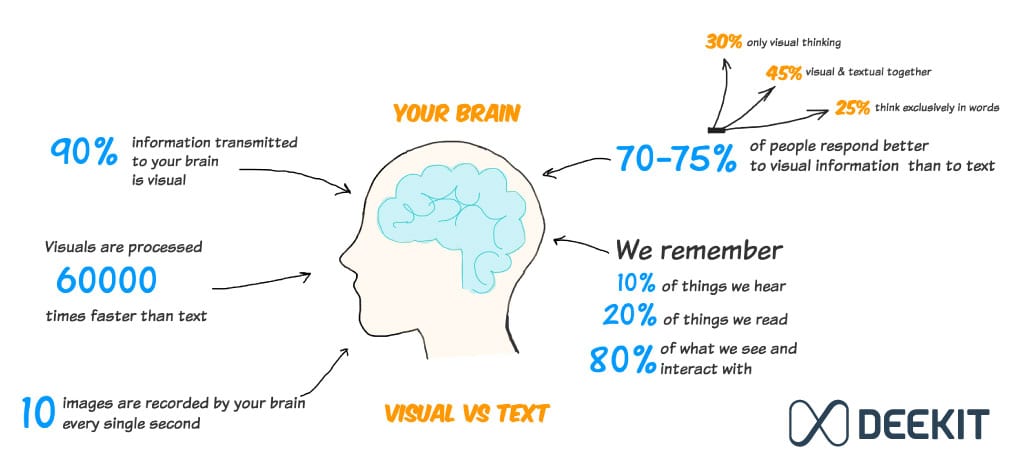The perception of information is of great importance in the learning process. Though information is perceived in many ways, the visual grasp is of utmost importance. Considering how visually oriented we are as humans, it is no surprise that images have such a powerful impact on us. Studies show that we retain approximately 10-20% of written or spoken information, but around 65% of information when it is presented visually. Visual information is perceived faster, it enriches the understanding, it is far more enjoyable and creates more educated learners.

In modern teaching terminology, we face the notion of “visual literacy” which implies the ability to read, write and create visual images. In other words, virtually literate learners are able to interpret visual messages in any way they are communicated.
However, until recently, images were traditionally seen as either decorative or secondary to text and images, they were merely used in terms of design in coursebooks or other teaching materials. A vivid example of this is a ‘spot the difference’ activity, in which students in pairs have two similar-looking images. This is typical of an activity that has direct answers and in which the student can contribute few (if any) ideas of their own. One more example of a simple visual task is matching words to the pictures.
In these cases, the image is simply a visual aid to the practice of a very limited range of structures or lexical items. Students just describe what they are expected to describe and cannot interpret or make the images on their own. When it comes to the interpretation of images in terms of visual literacy, students are exposed to the wider interrogation of images. Visual literacy is about decoding meaning from images of various kinds. This is possible with all language learners, even those with poor language knowledge.
Here are the main ways how the image is used in ELT classroom in terms of visual literacy.
1.The objective perspective (the image and itself)
Students describe the picture, examine the details of the various aspects of the image they are reading. This is the most obvious usage in the language classroom since it deals with descriptions, appearance, places, colours, spatial relationships, actions, and genre. The picture is described in terms of the actual facts seen in it by just looking at it. This type of interpretation can be used when introducing a new topic (travelling, advertising, family, cinema, food, etc) where a range of pictures about those topics can be presented to students in order to discuss them and find the topic.
- The affective perspective (the image and you)
This happens when students dig deeper to interpret the image. The personal perspective is all about speculating the image, analysing it, expressing a personal viewpoint on it and describing it from emotional perspective whether you judge the picture negatively or positively and how you put yourself in the given image. While dealing with this perspective students can be asked to describe them by expressing their personal opinion, associations connected with the image. They can work in groups, write the list of associations then compare theirs with peer groups and find some commonalities in their descriptions. These type of activities can fit well while revising active vocabulary (quality adjectives, some topic-based words, etc).
- The contextual perspective (the image and the world)
This perspective deals with the image as a piece of art by focusing on the stories which are behind them, how those stories contribute to the world, what motives they have, how they were created, etc . While dealing with this kind of interpretation some discussion topics can be chosen and a range of famous pictures on them can be handled to analyze. Another task is to ask students to bring some historical photos or photos from advertisements which have impressed them greatly and have in-classroom discussions on them. You can find great lesson ideas on visual literacy here and here.
Below you can see a table which illustrates questions on three aspects of visual interpretation of the images and some nice activities which hone learners’ visual literacy.
Source: ‘Visual literacy in English language teaching’, part of the Cambridge Papers in ELT series, August 2016

Following this link you can see nice illustrations of visual literacy activities.
As the modern life is full of images we meet everywhere (on the Internet, in everyday life) and we need to interpret, having visually literate learners is of great necessity and the activities suggested in this topic will make the acquisition of visual information more accessible and enjoyable.






 Вероника Аветисян
Вероника Аветисян 
 Маргарита Аветисян
Маргарита Аветисян 


